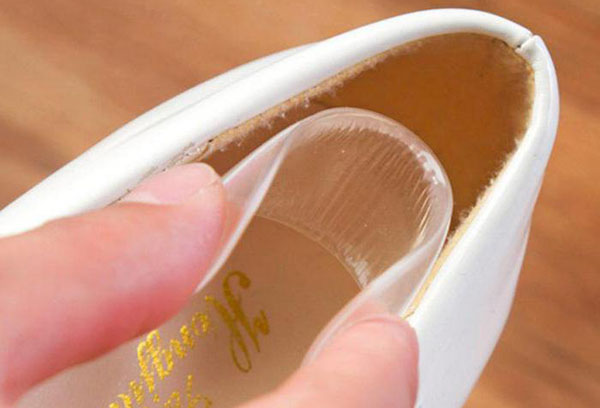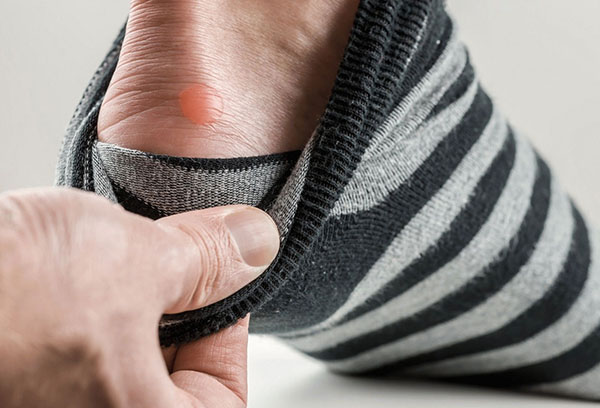What to do if new shoes chafe. Are your shoes rubbing your feet? A couple of tips to avoid this.
A newly purchased pair of boots or shoes does not always bring joy. After all, situations when shoes rub calluses on the heels are very common. There are techniques that will help you quickly deal with this problem.
Why do you have to break in your shoes?
Choosing the right shoes is a top priority. After all, only a high-quality pair that fits well on the foot can be worn comfortably. In the store you need to try on the model you like and walk around a little. If the shoes are too tight and it is uncomfortable to stand and move in heels, then you should refuse the purchase. Shoes usually stretch a little during wear, but this is a minor problem. The noticeable discomfort will not go away. This is why you need to buy shoes in your own size.
But it’s not so rare that even high-quality shoes that fit your feet rub your heels. This happens due to the fact that the material from which it is made is still unworn and hard. Moreover, the problem is relevant for both leather products and textiles. Gradually, the new pair will fit your feet, the back will soften, and you can forget about calluses. To speed up this process and break in shoes or boots, various methods are used.
Shoes may rub due to poor seams. Solving this problem is somewhat more difficult than simply taking apart a purchased pair, but it is still possible.
You can carry your shoes in using different methods. Thanks to this, the shoes will stop rubbing your heels, and you will be able to cope with the following inconveniences:
- the store did not have the appropriate size and had to take a slightly smaller one;
- the shoes are a little tight in width, but fit well in length, or vice versa;
- shoes become tight in the evening;
- the size changed after the rain (this often happens with suede products).
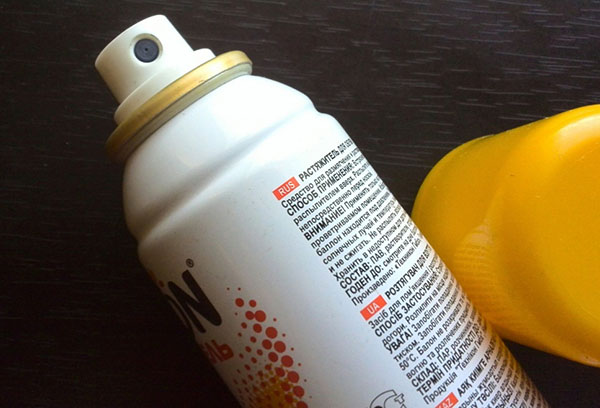
Special means
In some cases, it is enough to wear new shoes at home for an hour or two every day. After a few days, the discomfort will most likely pass. But you can use other methods. For example, many shoe shops offer stretching Leather Products using special equipment. If you don’t want to give your shoes to a master, then you should try to correct the situation yourself.
Special stretching agents are sold in stores. They are very easy to use, you just need to follow the instructions. Usually it's a spray. It is applied to inner side products, after which they are put on. Most likely, this will have to be repeated several times. To get results faster, you can warm up your shoes with a hairdryer, then apply similar remedy and put them on your feet in thick socks.
Also, if a new pair rubs your heel, you can buy a moleskin patch. It is glued both to a callus and to an uncomfortable place on shoes. Special soft strips are also sold that are placed inside to reduce friction. There are also silicone pads that are attached to the heel where the boots cause discomfort.
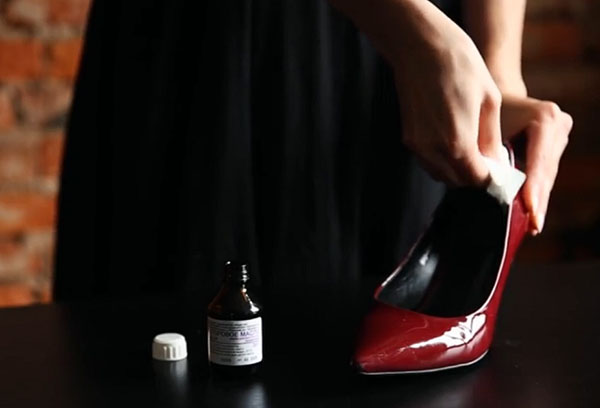
Traditional methods
When the question arises of how to wear a rubbing pair, you don’t have to go to the store. It is quite possible to achieve the desired effect using improvised means.
A hard back will soften faster if it is soaked. For leather it is recommended to use vinegar, for textiles - plain water. When the backdrop becomes wet enough, it must be gently wrinkled. You just need to pay attention that cardboard inserts are often used in textile products. Such influence will not benefit them.
Glycerin has proven itself well for leather items. It is easy to find at the pharmacy and the benefits can be impressive. The processing is carried out in this way. First you need to dip the towel in hot water, then it should be placed in the shoe. When it cools down, the shoes are lubricated with glycerin. Thanks to hot water the skin will be more receptive to the product.
A regular deodorant, roll-on or solid, will help you avoid calluses. You just need to lubricate the inside of your shoes.
If your shoes rub on the heel, you can use regular newspapers. They need to be torn into pieces and wetted generously. Then place it in the problematic pair, stuffing the product very tightly, and leave to dry. It is not recommended to put it on the battery; the process should take place naturally.
It is no less convenient to use alcohol. Alcohol or vodka will do; you can even use cologne. Needs lubrication inner surface, then the shoes should be put on your feet with warm socks. You need to walk like this for about half an hour. You just need to know that it is better to use beer for products made of fabric or suede. Otherwise, they are processed in the same way as leather ones.
It is not recommended to apply the product to the outside, as this may spoil the appearance of the shoes. Alcohol can change the condition and color of the material, so you should go outside in the treated pair only after it has completely dried.
Another popular folk method is freezing. Plastic bags should be filled with water and placed into problem items in such a way as to fill the areas that need to be stretched. It is better to take two bags for each boot, without tying the top one. This measure will help avoid an unpleasant situation if one of the packages turns out to be not too strong. The water will expand as it freezes, allowing it to achieve desired effect. Once the boots are removed from the freezer, it is not recommended to immediately remove the ice. You need to let it thaw a little. The method showed itself quite well, but in in rare cases shoes crack or wrinkles appear on them.
You can try more without dangerous method. It is very simple: you need to thoroughly moisten the towel with water and wrap the box with the purchased pair. A humid microclimate is formed in the box, which helps to quickly soften hard skin. The procedure should be quite long, it is recommended to leave the towel on overnight. You may need to do this several times.
To spread uncomfortable shoes, you can lubricate it from the inside with castor oil. Another option is to lubricate the backdrop with a piece of soap or a candle. Friction will decrease, which means calluses will not appear.
If your shoes are rubbing because of the seam
Even knowing how to break in uncomfortable shoes, it is not always easy to solve this problem. If the cause of discomfort is a rough seam on the heel, then simply softening the skin will not help. The easiest way is to refuse such a pair, return it or exchange it.
But if you like the shoes and don’t want to part with them or it’s impossible to return them, then there is a way out. You need to go to a shoe shop. Depending on the model and material from which the shoes are made, a specialist will be able to:
- move the seam to the side;
- apply a soft patch.
As a result, the seam will stop rubbing your foot, the discomfort will disappear, and you can safely walk in the shoes. Appearance the couple will not be harmed.
What to do if calluses appear
It is not always possible to protect your feet from calluses. In this case, it is important to know what to do. If a blister forms, you should never puncture it or remove it in any other way. The fact is that it contains a liquid that is an antiseptic and protects delicate skin from bacteria. Therefore, you must try not to damage it when walking. After some time it will burst on its own. Then it is recommended to crumble two streptocide tablets and treat the wound. This will promote faster healing.
It is also worth using bactericidal patches. Moreover, they are used both for calluses that have already appeared, and for the prevention of their formation. You just need to stick them where the heel is most in contact with the heel. Your feet will be comfortable, and the new pair will soon be broken in.
Knowing what to do if new shoes rubs your feet, you can quickly solve this problem. You can use a special tool that will help you break in uncomfortable shoes, or try one of the traditional methods. Leather products are best affected. You just need to be patient and do everything correctly, following the recommendations.
Lose weight easily (results in 25 days)
Why persistent dieting DOES NOT BRING visible results, but only leads to frustration and depression, and how to still lose weight in order to:
- Get your husband's attention back or find a new man.
- Feel the envious glances of friends and colleagues again.
- Believe in yourself, feel slim and desired.
- Don't be shy to go to the cinema or to a cafe with your friends.
- They are not shy about posting photos from vacation or with children on social networks.
Burn fat specifically in problem areas
How often, having put on a new pair of shoes in the morning with pleasure and joy, in the evening we return with swollen and exhausted feet with calluses and scuffs! All the joy from beautiful shoes turns out to be spoiled for a long time, since chafed feet will have to be treated for a long time, and you will have to walk in old, soft and comfortable shoes, almost in slippers.
What should you do to rid yourself of problems with chafing and wear your favorite shoes with pleasure, not pain? There are several simple ways to deal with this situation.
How to break in tight shoes
Are you going to a party, visiting or going for a walk and you have new shoes? Have mercy on your feet and don’t spoil your holiday. If the shoes do not pinch anywhere when trying them on, this does not mean that during wearing they will not reveal such “pleasant” features as protruding sharp parts, a heel that rubs, or decorative details that pinch the toes. To avoid such “surprises,” simply put on new shoes, sandals or boots at home and wear them for several days, at least an hour a day. This will help the product mold to the shape of your foot and will also help you locate areas where a callus or abrasion may occur. While wearing shoes at home, you will be able to find protruding threads or pieces of trim that can be carefully trimmed, find out exactly where the shoes are rubbing and whether they are true to their size.
If you find that your new pair of shoes is rubbing because they are too small, you can try breaking them in. Remember that this can only be done if the size difference is no more than half the size.
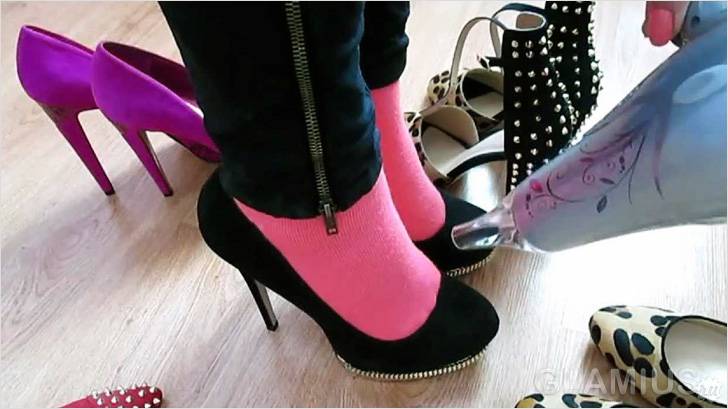
To break in, you can use “grandmother’s” methods:
- Wearing new shoes with thick socks. This is the safest method in all respects. With it, it is impossible to damage an expensive pair of shoes or “torture” your feet.
- Wetting the inside of shoes with water before putting them on. This is a risky method, as it can leave permanent stains, severely deform the shape of the shoe, and cause parts and finishes to peel off. This method is good if it turns out that only some part of the shoe is in the way, for example, the side part is pressing. It is enough to moisten it a little with water and wear it for a couple of hours until the desired effect is obtained.
- Using alcohol as a dressing agent. Quite an effective, but also dangerous method. It can cause severe deformation and stretching of shoes and boots made of very thin leather, as well as the appearance of stains, especially on multi-colored, suede and textile products. Alcohol also dries out the skin and feet and can cause them to be permanently stained with shoe dye. Shoes stretched using this method can still be “painted” for a long time, spoiling hosiery.
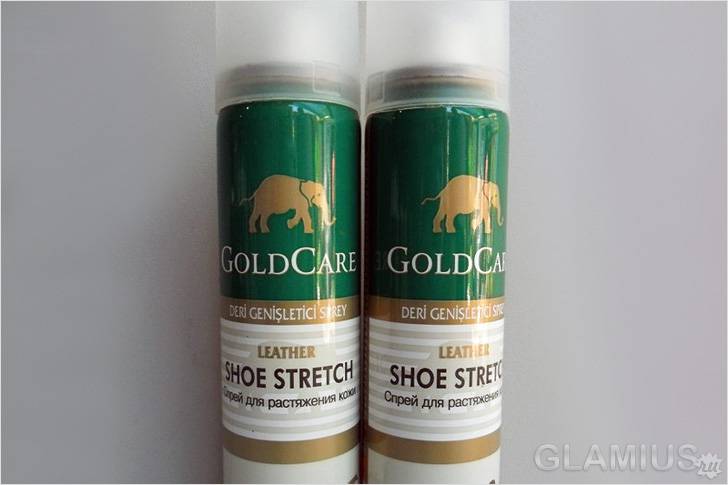
Note! The most correct and safe method breaking in shoes is the use of a special factory spray or foam to increase the size of shoes. Such products have a proven formula and are safe for both shoes and human health.
How to deal with it
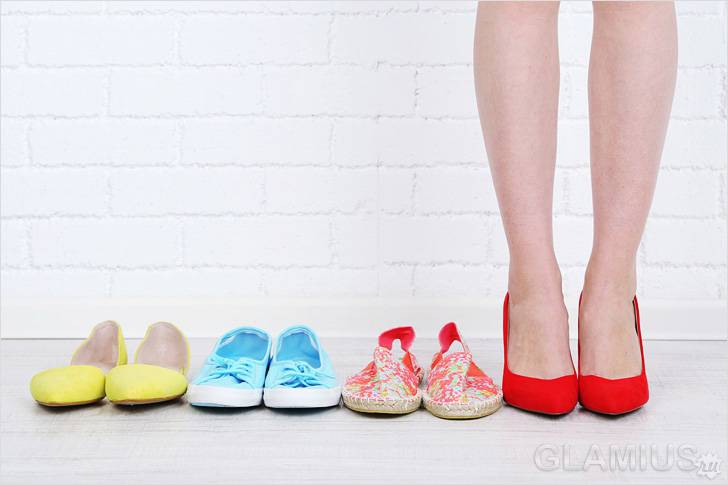
Shoes can be new or old, fit your size, but from time to time your feet will chafe. different places. This can be caused by many reasons - swelling on a hot day or during large physical activity, excessive sweating, dust, sand getting into shoes, structural features of the foot, inconsistency of the chosen pair and many other factors.
There are several options for action that you can take if your shoes are rubbing. All of them are designed to either reduce friction or eliminate its cause.
Summer shoes chafe
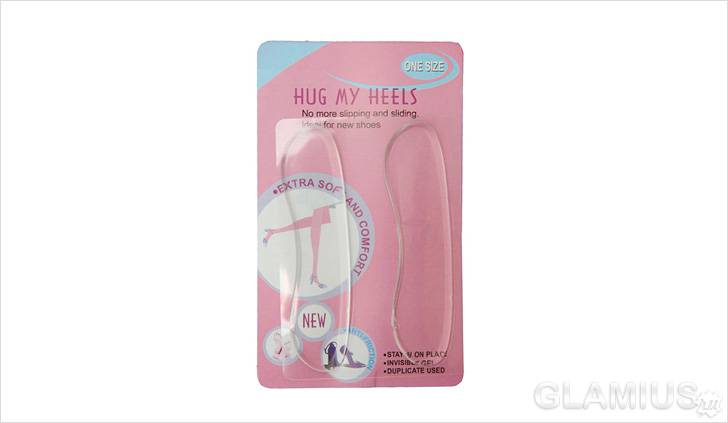
If your favorite summer strappy sandals rub your sensitive calluses, buy special silicone self-adhesive strips. They are glued to the straps from the inside out so that they touch the skin, preventing pressure and rubbing on the feet by the shoe material itself. This is a great way to get rid of problems with elegant shoes in hot weather. summer days and evenings when “steamed” legs are simply cut until they bleed with the straps and edges of fashionable sandals.
Shoes rub your heel
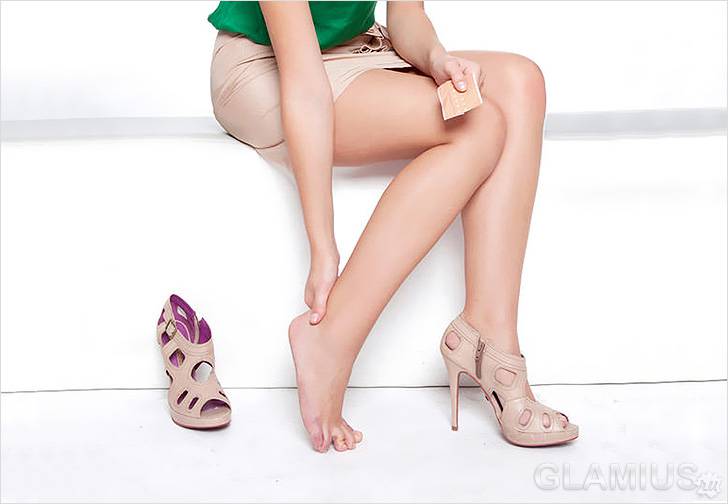
Closed shoes have another “sin” - they often rub the heel. You can get rid of this simple method– rub the inside of the backdrop with a candle, a piece of wax or rosin. These substances will smooth the surface of the backdrop and make it smooth and more gliding.
Sometimes the cause of heel rubbing is an unnoticeable protrusion on the heel or a rough seam. Feel the back with your hands, remove any protruding threads or parts, and iron the rough seam with force with the large handle of a table knife. This will smooth out any uneven edges and make the seam flatter. Also, when rubbing the heel, dusting the inside of the feet and shoes with talcum powder, baby powder or finely ground magnesium powder helps. In addition to making shoes easier to wear, these products eliminate excessive sweat.
Note! The simplest and effective method– use of special silicone or leather pads glued to the backdrops.
Rubs the edge of the shoes
![]()
Sometimes it happens that everything is fine in the shoes, but one edge of it literally digs into the skin. This usually happens at the junction of two or more parts. If you don't know what to do with such a pair, try purchasing the same silicone self-adhesive pads as special tapes for sandals. They have the shape of a small circle or oval and are attached from the inside to the place where there is a defect. Usually this is enough to make wearing shoes easier and more comfortable.
Video
Read more about the shoe "upgrade" below:
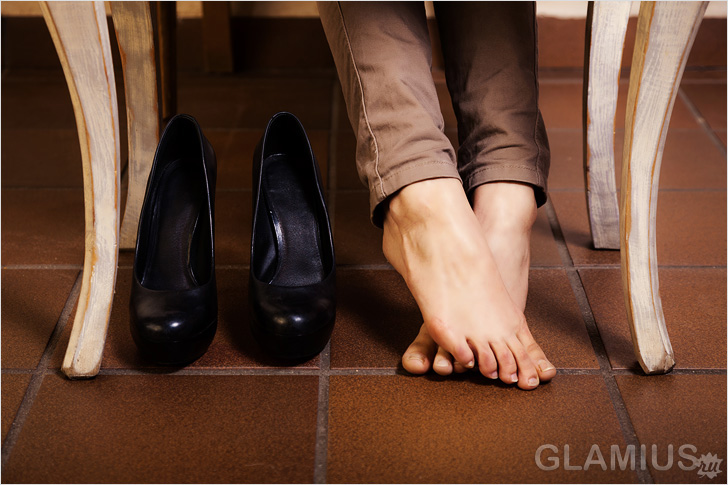
How often, having put on a new pair of shoes in the morning with pleasure and joy, in the evening we return with swollen and exhausted feet with calluses and scuffs! All the joy from beautiful shoes turns out to be spoiled for a long time, since chafed feet will have to be treated for a long time, and you will have to walk in old, soft and comfortable shoes, almost in slippers.
What should you do to rid yourself of problems with chafing and wear your favorite shoes with pleasure, not pain? There are several simple ways to deal with this situation.
How to break in tight shoes
Are you going to a party, visiting or going for a walk and you have new shoes? Have mercy on your feet and don’t spoil your holiday. If the shoes do not pinch anywhere when trying them on, this does not mean that during wearing they will not reveal such “pleasant” features as protruding sharp parts, a heel that rubs, or decorative details that pinch the toes. To avoid such “surprises,” simply put on new shoes, sandals or boots at home and wear them for several days, at least an hour a day. This will help the product mold to the shape of your foot and will also help you locate areas where a callus or abrasion may occur. While wearing shoes at home, you will be able to find protruding threads or pieces of trim that can be carefully trimmed, find out exactly where the shoes are rubbing and whether they are true to their size.
If you find that your new pair of shoes is rubbing because they are too small, you can try breaking them in. Remember that this can only be done if the size difference is no more than half the size.
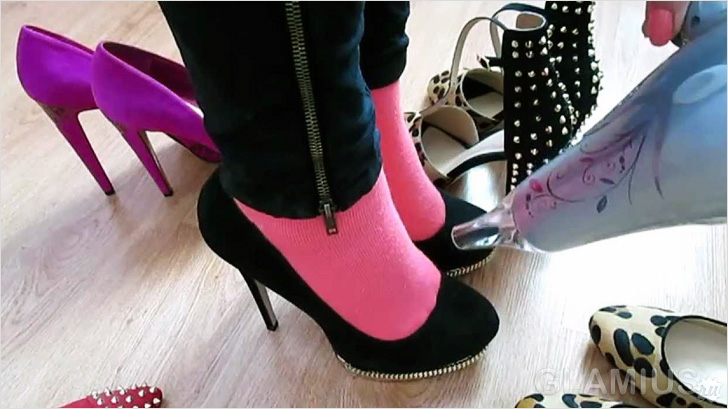
To break in, you can use “grandmother’s” methods:
- Wearing new shoes with thick socks. This is the safest method in all respects. With it, it is impossible to damage an expensive pair of shoes or “torture” your feet.
- Wetting the inside of shoes with water before putting them on. This is a risky method, as it can leave permanent stains, severely deform the shape of the shoe, and cause parts and finishes to peel off. This method is good if it turns out that only some part of the shoe is in the way, for example, the side part is pressing. It is enough to moisten it a little with water and wear it for a couple of hours until the desired effect is obtained.
- Using alcohol as a dressing agent. Quite an effective, but also dangerous method. It can cause severe deformation and stretching of shoes and boots made of very thin leather, as well as the appearance of stains, especially on multi-colored, suede and textile products. Alcohol also dries out the skin and feet and can cause them to be permanently stained with shoe dye. Shoes stretched by this method can be “painted” for a long time, spoiling the hosiery.
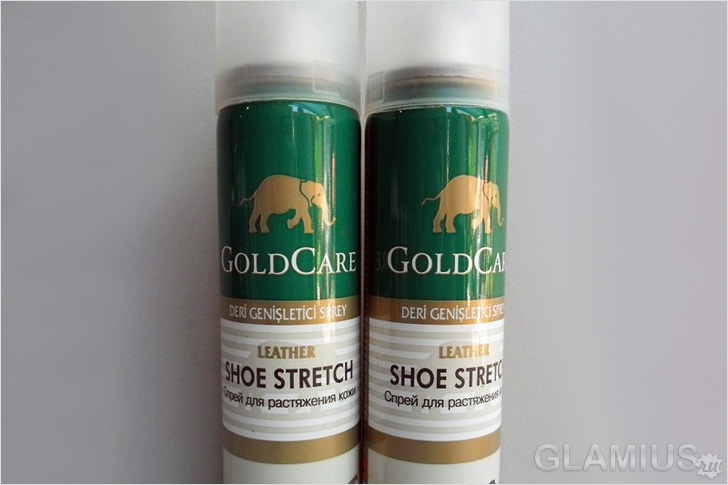
Note! The most correct and safe method of breaking in shoes is to use a special factory-made spray or foam to increase the size of the shoes. Such products have a proven formula and are safe for both shoes and human health.
How to deal with it
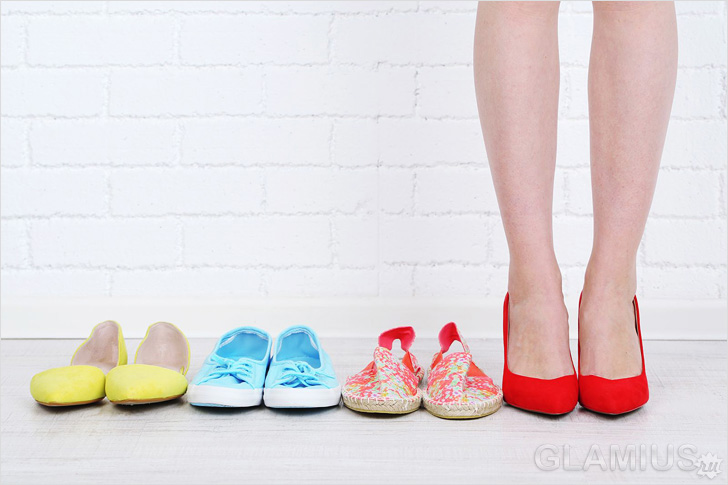
Shoes may be new or old, true to your size, but from time to time your feet will rub in different places. This can be caused by many reasons - swelling on a hot day or during heavy physical activity, increased sweating, dust, sand getting into shoes, structural features of the foot, inconsistency of the chosen pair and many other factors.
There are several options for action that you can take if your shoes are rubbing. All of them are designed to either reduce friction or eliminate its cause.
Summer shoes chafe
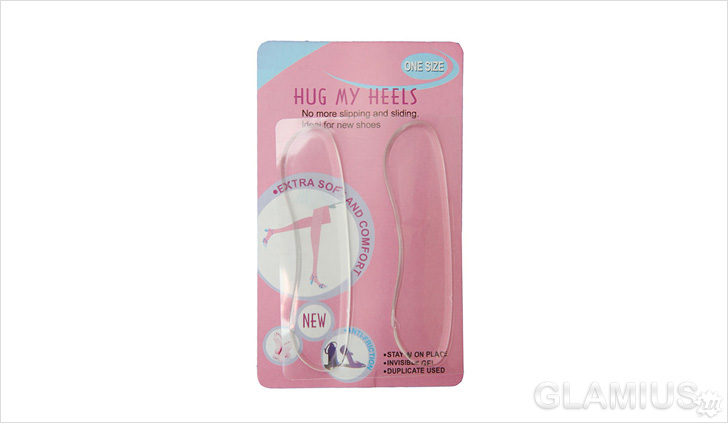
If your favorite summer strappy sandals rub your sensitive calluses, buy special silicone self-adhesive strips. They are glued to the straps from the inside out so that they touch the skin, preventing pressure and rubbing on the feet by the shoe material itself. This is a great way to get rid of problems with elegant shoes on hot summer days and evenings, when “steamed” feet are simply cut to blood by the straps and edges of fashionable sandals.
Shoes rub your heel
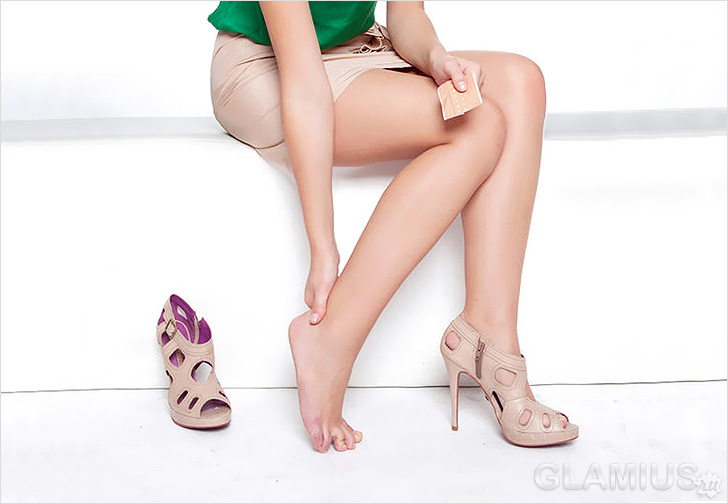
Closed shoes have another “sin” - they often rub the heel. You can get rid of this using a simple method - rub the inside of the backdrop with a candle, a piece of wax or rosin. These substances will smooth the surface of the backdrop and make it smooth and more gliding.
Sometimes the cause of heel rubbing is an unnoticeable protrusion on the heel or a rough seam. Feel the back with your hands, remove any protruding threads or parts, and iron the rough seam with force with the large handle of a table knife. This will smooth out any uneven edges and make the seam flatter. Also, when rubbing the heel, dusting the inside of the feet and shoes with talcum powder, baby powder or finely ground magnesium powder helps. In addition to making shoes easier to wear, these products eliminate excessive sweat.
Note! The simplest and most effective method is to use special silicone or leather pads glued to the backdrops.
Rubs the edge of the shoes
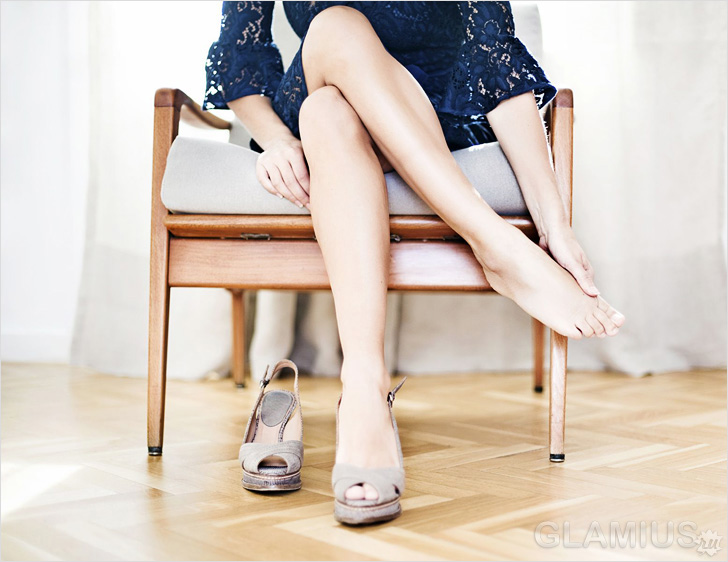
Sometimes it happens that everything is fine in the shoes, but one edge of it literally digs into the skin. This usually happens at the junction of two or more parts. If you don't know what to do with such a pair, try purchasing the same silicone self-adhesive pads as special tapes for sandals. They have the shape of a small circle or oval and are attached from the inside to the place where there is a defect. Usually this is enough to make wearing shoes easier and more comfortable.
Video
Read more about the shoe "upgrade" below:
Did you buy new shoes? They are so beautiful that there are simply no words! There are no words, but plenty of interjections. Oohs and aahs flow in like a river, because the new shoes quickly rubbed their feet blood. It seems unfair. After all, in the store the shoes fit like a glove and clung to the foot so effectively that they seemed like a continuation of it. And here it’s such a shame! Don’t be discouraged, a new pair of shoes may chafe, but you have the power to correct the situation and give comfort to your own feet. So, what to do if your shoes rub?
Problematic question
What shoes do you prefer? Comfortable or beautiful? It is not always possible to combine these two qualities. Weightless shoes with high stiletto heels make the foot look small and the gait look sexy, but there is no smell of comfort here. You will have to control every step, and keep a blissful smile on your face, so that no one thinks that new shoes are rubbing blisters. What to do? The expression of agony on the face has never been beautiful for anyone, and you will not be an exception. By the way, sneakers can also cause problems. If the insole “walks”, the toe has synthetic fibers, and the sides are too hard, then calluses are inevitable. But why endure if it hurts? After all, you can, at least a little, make it easier for yourself to adapt to new couple, to wear it with pleasure, and not with the hope that it will soon be worn out. 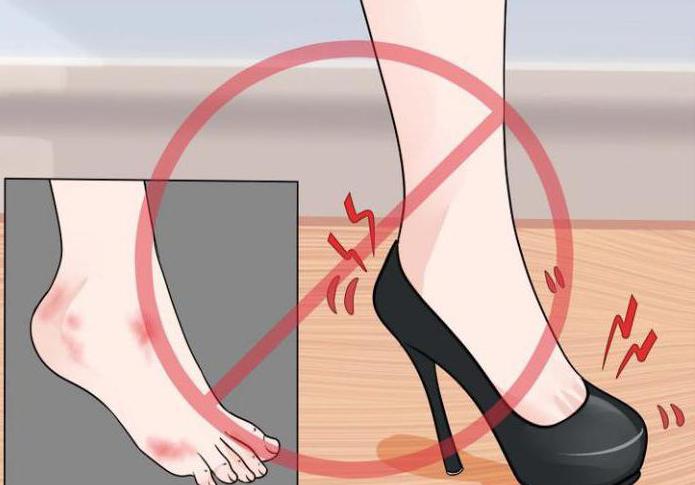
Beginning of the season
Oh yes, the beginning of every season is the time for chafing and blistering of the heels. The shoes look like lasts, and the boots look like real torture chambers. In summer, shoes rub your heels. What to do? Take care of this prospect in advance! Buy several pairs with a cooling effect in advance. Yes, these things are a bit pricey, but your feet will be fresh and beautiful from morning to evening. For those who like closed shoes even in the summer, it is better to purchase silicone heel pads or socks. It will be more comfortable and neat this way.
At home, try on a new pair and walk around the room in it, but not with a well-calibrated catwalk gait, but as you walk in ordinary life. Sit down and adjust the strap on your sandal. Do a few squats and try to jump. What does it feel like? And if you have to run after the bus, then it would be good to practice running in new shoes. The test is done, and your legs are tired even at home. So what to do if your shoes rub? Let's start using funds from grandma's hiding places. 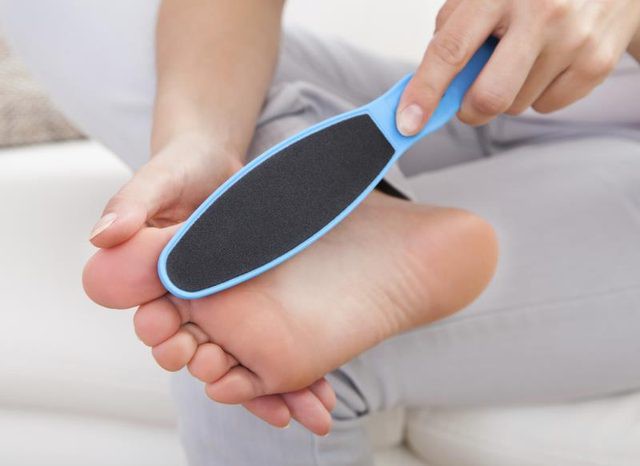
Conservative approach
Do you feel discomfort in the heel area? Then take a piece of soap or a candle. Rub the inside of the back of the shoe with it. Repeat the procedure a couple of times a day until the shoes turn into slippers according to the degree of comfort.
What to do if new leather shoes rub? This will take more time. Take out two plastic bags, fill them with water and put them in your shoes. The shoes themselves go into the freezer overnight. When water freezes, it expands and shoes expand with it.
If an urgent date is on the horizon, and your shoes are too tight, then use an emergency measure. Find the thickest ones in the house, put them on and put your shoes on top. Now blow a stream of hot air from a hair dryer for a long time on the most problematic areas (toe, heel). Move your foot from time to time so that the shoe stretches towards you. 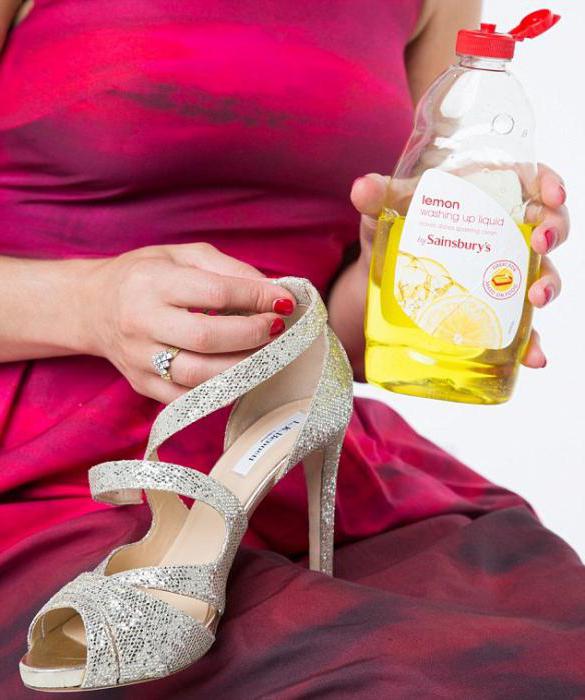
For money
If the old methods, tested by millions of women and girls, do not inspire confidence, then you can trust the beauty industry and run to the nearest shoe salon. There will probably be more than one tube of stretch foam or similar spray. This type of product should be applied to problem areas and shoes should be worn in.
The spray will help if you have already rubbed your foot with your shoes. What to do? Yes, use the old trick with woolen socks, but first warm up the shoes with a hairdryer and quickly spray them with stretcher. After cooling, the procedure must be repeated. After such execution, even uncomfortable shoes will become slippers!
If only the edges of the shoes are problematic, then soft silicone strips that protect against excess friction will be your salvation.
If it hurts even to walk
Let's imagine the most terrible situation: rush hour, crowded buses, the middle of the working day. New shoes, which seemed perfect in the morning, have now turned into monsters raping your feet. I need to run errands, but there are bloody blisters on the heel, and my toes threaten to curl into a snail if they are not urgently removed from the shoes into the light of day. What to do if your shoes are rubbing, but you don’t even have time to recover?
Find the nearest bench, take off your shoes. If you are wearing ankle boots or socks, take them off too. Let your feet breathe. In the meantime, examine your purse. Perhaps there is a band-aid there? Or a bandage? Or at least a wet wipe? If there is a mini-bottle of perfume there, then the wounds can be disinfected. Do not peel the skin off the blisters, otherwise the pain will go through the roof. Make an alcohol lotion and use a soft cloth to apply the most problematic areas in the shoe. Stretch your fingers a little. If there is a fountain nearby and the area is free for walking, then soak your feet in it. On a hot day this will be your nirvana! After 10-15 minutes, put your shoes back on. Now you can at least get to the pharmacy to buy a band-aid and cover up the wounds. 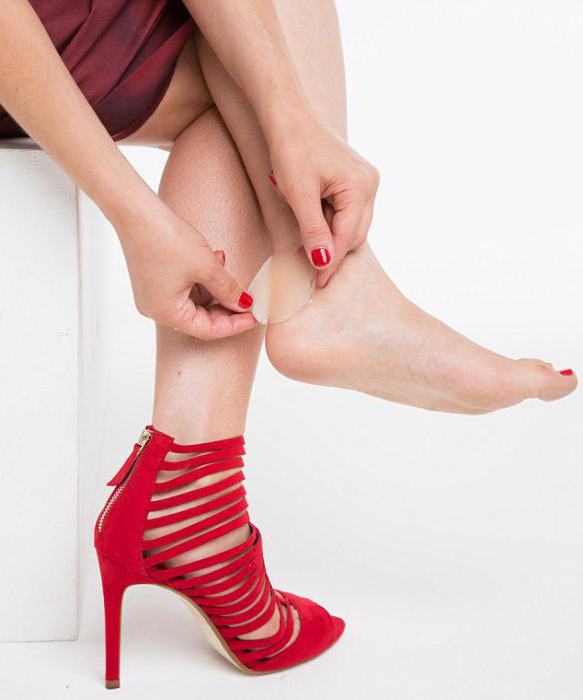
For those who are unlucky
What to do if your shoes are constantly rubbing? If the skin is so delicate that it is impossible not to injure it? Always break in your shoes. Put it on a wet sock and walk until the latter is completely dry. Buy some lasts to stretch your shoes to the desired shape and size. Immediately soften the backdrop by tapping it with a hammer. This is relevant advice for boots, ankle boots and other hard shoes. To avoid scratching the skin, cover the back with a soft cloth.
You can modify the wet sock method and use alcohol instead of water. It dries much faster, and the shoes, accordingly, will take shape more quickly. True, alcohol can ruin the color. But you can use beer for suede! 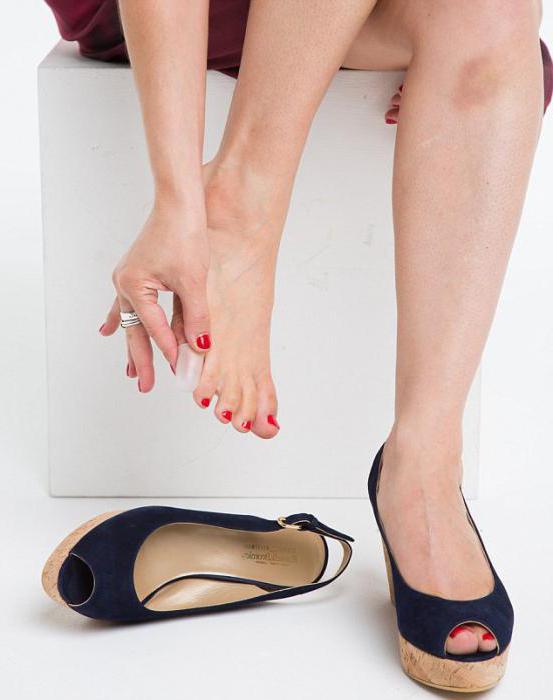
No unnecessary sacrifices
At the end of the conversation, you can discuss ways to wear shoes with minimal risks. So, what to do if your shoes rub against calluses? You can take a large towel, wet it and wrap it around the box containing your new pair of shoes. Leave everything like this overnight. The box will naturally soften, the inside will be humid and stuffy, causing the shoes to become pliable.
Before trying on shoes, lubricate your feet with rich baby cream. Try to let it soak in. Then the leather will become softer, friction will disappear, and the shoes will not press so hard. If there is a day before the new pair “walks”, then stuff a lump of damp newspaper inside at night. Let everything dry without your help. Only then will the shoes stretch.
Finally, it will be easy and quick to get caught in the rain in a new pair. The shoes will begin to squelch, play will appear, and the leather will shrink down the leg. Once the shoe is dry, you will be surprised at how comfortable it is.
There are many ways to break in shoes, so don’t be afraid to experiment and remember that blisters are easier to prevent than to cure!
If you bought new shoes, then most likely by the end of the first day they will form on your heels. What to do in this case and why do new shoes rub the heel?
What can you do to prevent shoes from rubbing your heels?
To correct this situation, there are several options.
- Place a soft cloth on the heel of your new shoes and tap it with a hammer without applying much force. This will make your skin softer and your shoes will stop rubbing your heels.
- It will help to reduce the friction of the heel on the heel with soap or a candle, which should be rubbed from the inside of the heel of new shoes. However, this procedure must be done until the shoes stop rubbing.
- Wet the backs in those places that rub with vodka, put the shoes on your feet and walk like this for at least half an hour. The shoes will fit your feet and stop rubbing calluses.
- You can soak a small towel in vinegar and place it in your shoes overnight.
- It happens that shoes that are a little small for you rub. In this case, you need to put a rag soaked in very hot water in it for about fifteen minutes. Then you need to put on shoes with thick socks and walk around the house like that for at least a couple of hours. The result will surprise you.
- You can expand a little in this way - fill two tight plastic bags with water and tie them tightly. Carefully place these bags into your shoes and place the entire structure in the freezer overnight. Water will freeze in the cold, expanding and stretching your shoes.
- The traditional method for treating calluses is to place an adhesive plaster on the heels or backs of shoes.
- If the methods listed above do not help, you can go to a shoe store where you can purchase special devices that will help avoid calluses on your feet.

